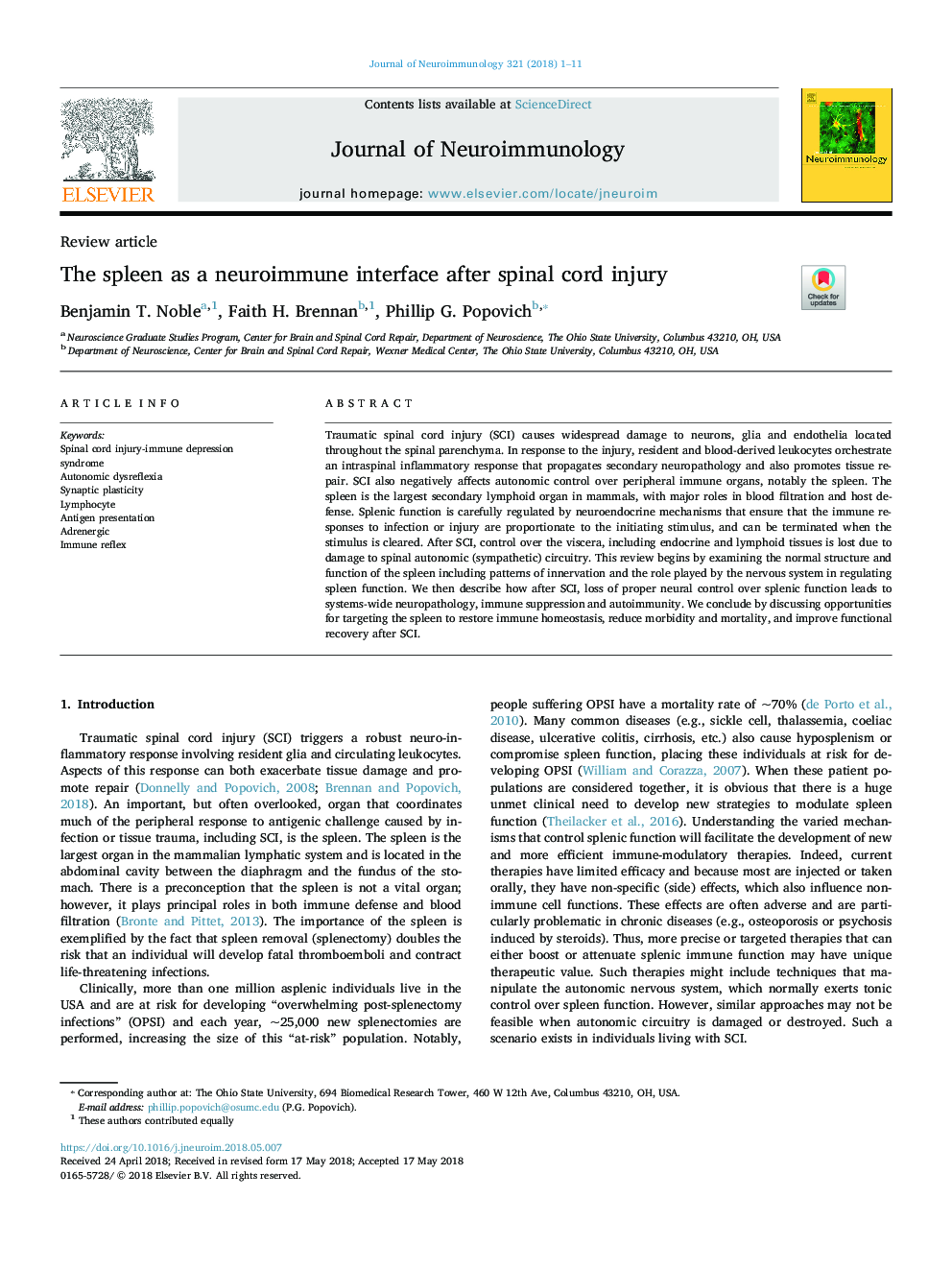| کد مقاله | کد نشریه | سال انتشار | مقاله انگلیسی | نسخه تمام متن |
|---|---|---|---|---|
| 8685680 | 1580354 | 2018 | 11 صفحه PDF | دانلود رایگان |
عنوان انگلیسی مقاله ISI
The spleen as a neuroimmune interface after spinal cord injury
ترجمه فارسی عنوان
طحال به عنوان یک رابط عصبی مصنوعی پس از آسیب نخاعی
دانلود مقاله + سفارش ترجمه
دانلود مقاله ISI انگلیسی
رایگان برای ایرانیان
کلمات کلیدی
موضوعات مرتبط
علوم زیستی و بیوفناوری
ایمنی شناسی و میکروب شناسی
ایمونولوژی
چکیده انگلیسی
Traumatic spinal cord injury (SCI) causes widespread damage to neurons, glia and endothelia located throughout the spinal parenchyma. In response to the injury, resident and blood-derived leukocytes orchestrate an intraspinal inflammatory response that propagates secondary neuropathology and also promotes tissue repair. SCI also negatively affects autonomic control over peripheral immune organs, notably the spleen. The spleen is the largest secondary lymphoid organ in mammals, with major roles in blood filtration and host defense. Splenic function is carefully regulated by neuroendocrine mechanisms that ensure that the immune responses to infection or injury are proportionate to the initiating stimulus, and can be terminated when the stimulus is cleared. After SCI, control over the viscera, including endocrine and lymphoid tissues is lost due to damage to spinal autonomic (sympathetic) circuitry. This review begins by examining the normal structure and function of the spleen including patterns of innervation and the role played by the nervous system in regulating spleen function. We then describe how after SCI, loss of proper neural control over splenic function leads to systems-wide neuropathology, immune suppression and autoimmunity. We conclude by discussing opportunities for targeting the spleen to restore immune homeostasis, reduce morbidity and mortality, and improve functional recovery after SCI.
ناشر
Database: Elsevier - ScienceDirect (ساینس دایرکت)
Journal: Journal of Neuroimmunology - Volume 321, 15 August 2018, Pages 1-11
Journal: Journal of Neuroimmunology - Volume 321, 15 August 2018, Pages 1-11
نویسندگان
Benjamin T. Noble, Faith H. Brennan, Phillip G. Popovich,
